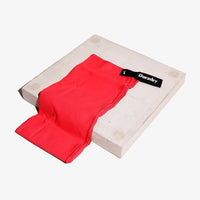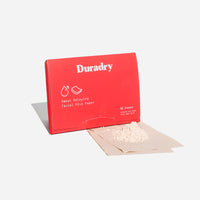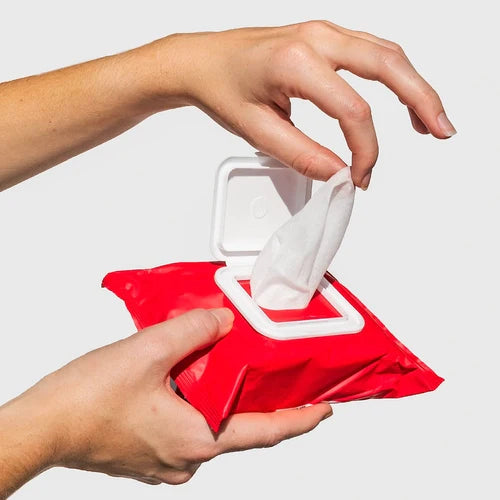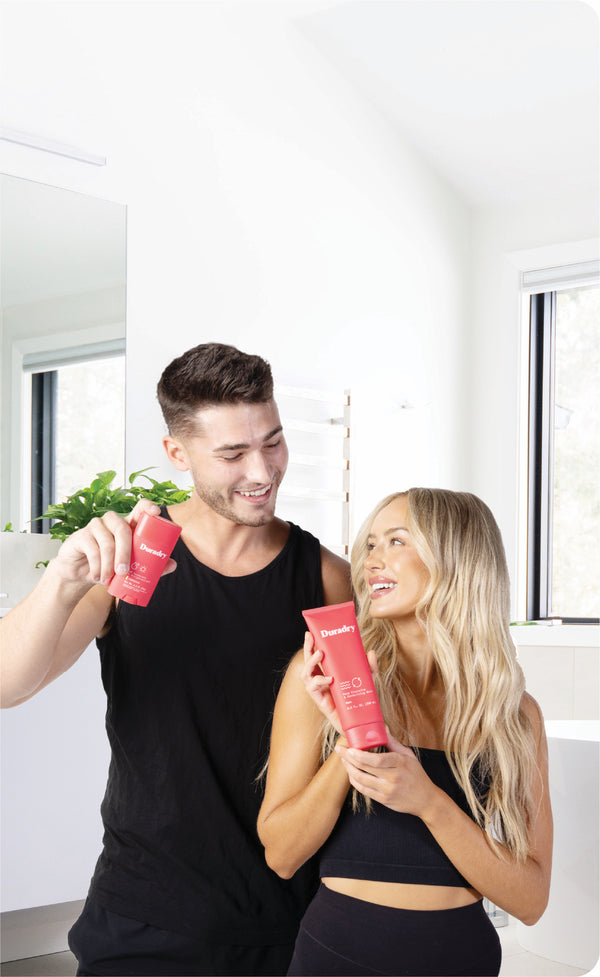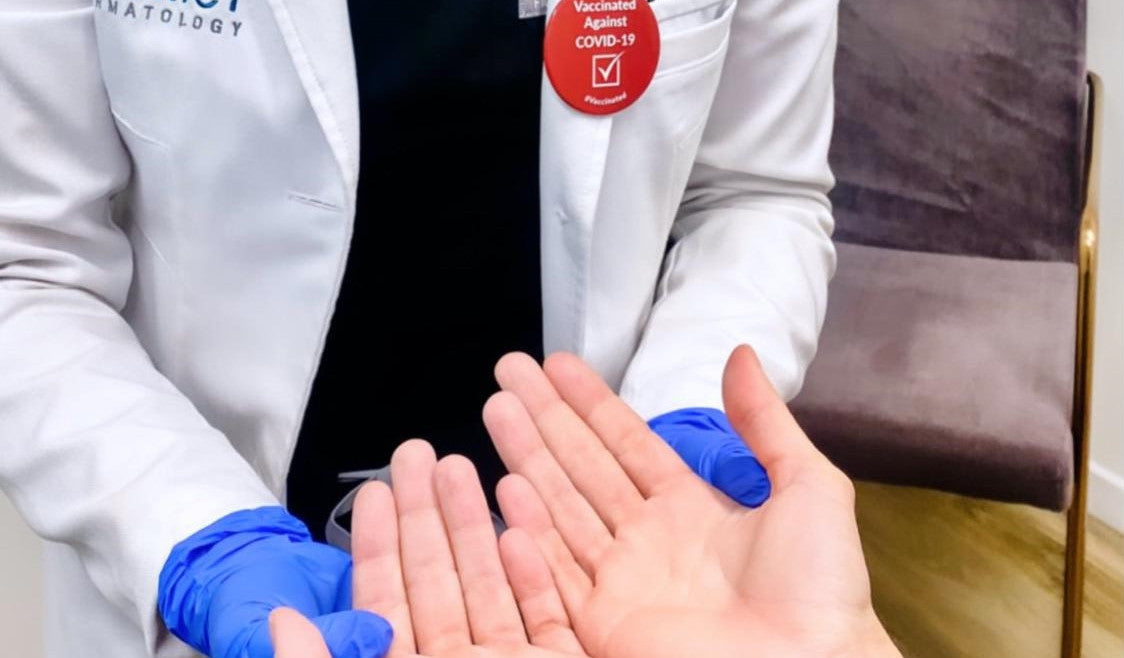Sweating is a natural response to physical or emotional stress. However, when sweating becomes excessive and uncontrollable, it can cause discomfort and embarrassment. That's where hyperhidrosis comes in - a condition marked by excessive sweating. Hyperhidrosis can be classified into primary and secondary hyperhidrosis, based on the cause of the sweat glands' overactivity. This blog talks about the best hyperhidrosis treatments and discusses their benefits and drawbacks.
When choosing the best hyperhidrosis treatment product, it's important to consider cost, efficacy, and side effects. Remember, there is no one cure for hyperhidrosis, so it's important to find the treatment that is right for you.
Considerations Before Choosing an Hyperhidrosis Treatment
There are many types of hyperhidrosis, so it's important to know which one you have. If you're not sure, talk to your doctor to find out. Once you know which type of hyperhidrosis you have, it's time to start looking for a treatment.
There are many types of hyperhidrosis treatments on the market, and they come in a variety of forms - pills, creams, and gels. It's important to find one that fits your needs best. After trying out a few different products, choose the one that works best for you and stick with it! Remember, hyperhidrosis is a condition, so it's important to remain consistent with your treatment in order to achieve the best results.
How Do Dermatologists Diagnose Hyperhidrosis?
Dermatologists diagnose hyperhidrosis by performing a skin examination and ruling out other causes of excessive sweating, such as primary, secondary or tertiary hyperhidrosis.
To diagnose primary hyperhidrosis , dermatologist may perform passive sweat test in which sweat level is measured after subject stays at ambient temperature for different time intervals. In case of secondary hyperhidrosis , doctor may order certain tests to check hormonal imbalance such as blood chemistry analysis, thyroid stimulating hormone (TSH) levels etc., while in tertiary hyperhidrosis diagnosis might require sweat glands excision and sweat analysis under microscope for excessive sweat production. This is the most accurate way to diagnose hyperhidrosis
Another test used by dermatologists is the sweat gland imaging. This technique uses X-rays or ultrasound to look at how many sweat glands are activated during sweating. Hyperhidrosis can be caused by an abnormality within one or more of these glands.
Finally, there is another test called skin sweat analysis. This test measures the amount of sweat that comes out of the skin after just five minutes of sweating. It can be done with a tape measure or special instrument called an evaporimeter.

Classification of hyperhidrosis treatments
Dermatologists have many proven treatments for hyperhidrosis. Most commonly, these treatments involve topical solutions (applying a solution to the skin), oral medications (taken by mouth) or dermal injections/ creams that apply pressure to the sweat glands. When the case is more severe, the dermatologist may recommend surgery as a treatment.
There are a variety of hyperhidrosis treatments on the market, and it can be tough to determine which is best for you. To make things a little easier, we've put together a list of the main types and their benefits and drawbacks. Before making a decision, it's important to know your goal - is treatment of excessive sweating foremost in your mind, or is stopping sweating the most important factor? Once you've figured that out, it's time to pick the best hyperhidrosis treatment for you!
1.Aluminum Chloride Hexahydrate and Topical Solutions for Excessive Sweating
One of the most common and the first line hyperhidrosis treatment products on the market, is aluminum chloride hexahydrate as an antiperspirant. It works by reducing sweat production, which can be helpful for people who have a lot of sweat gland activity. It comes in sticks or in topical solutions.
Topical solutions are medications that you apply to your skin and they come in lotions, gels and sprays – each with different benefits and drawbacks. Lotions tend to be the most popular because they are easy to apply and can cover a large area of skin, making them good for people who have hyperhidrosis on multiple parts of their body. However, lotions can be oily, so many people prefers gel presentations.
Before purchasing a product, make sure to read reviews to see if it's the right solution for you. Keep in mind that treatments may take time to work, so be patient!

2.Iontophoresis for Excessive Sweating
If you're suffering from excessive sweating in hands and/or feet (plantar hyperhidrosis), iontophoresis may be the treatment for you. This treatment works by passing an electric current through the veins in your hands and feet, causing them to swell. This reduces blood flow to the skin, which stops sweat from beading up on the skin surface. The treatments are not permanent, but they work quickly and effectively for most people. However, iontophoresis treatments can be a little invasive.
3.Oral Drugs for Excessive Sweating
Oral drugs are another common form of treatment for hyperhidrosis, and they work well in many cases. The side effects can be mild or severe, but usually resolve over time. To find the best oral drug for excessive sweating, it's important to review the available options and determine which is best for you. Some factors to consider are side effects, price, and quality. Once you've made your choice, be sure to follow the prescribed dosage and schedule to ensure best results.
Glycopyrrolate is an anticholinergic medication that's frequently used to treat excessive sweating. This medication works by inhibiting the release of sweat from the sweat glands. It can be effective in treating excessive sweating, but it may have side effects including dry mouth and dizziness.
Oxybutinin is another medication that's often used and it works by blocking the nerve impulses that cause sweat glands to release sweat.
4.Botox and Excessive Sweating
Botox is a great treatment for excessive sweating because it blocks nerve impulses that cause the sweat glands to operate abnormally. The injections are usually given under the skin in the armpit, side of the neck, or underarm. The treatment can be effective and is typically painless, but it may take a few treatments to see results. Treatment sessions usually last around 45 minutes. Side effects are usually mild and last for a few days following treatment. So, if you're looking to get relief from excessive sweating, make sure to consult with a dermatologist and select the best hyperhidrosis treatment product for you.

5.MiraDry and Lasers
There's no denying that hyperhidrosis can be a frustrating condition. It can be tough to live a normal life when you're constantly sweating under the hot sun or in humid environments. Luckily, there are several treatment options available. MiraDry is the latest hyperhidrosis treatment device to hit the market, it uses a thermal energy to destroy sweat glands, which results in reduced sweating. The treatment is painless and results are usually seen within two weeks, but may take up to 12 treatments for maximum results. Other hyperhidrosis treatments that use lasers include HyperLase IV and ZEUS Phototherapeutic System (ZPS). Both of these treatments are quite expensive, but they offer relief from excessive sweating.
6.Surgery for Excessive Sweating
The most popular surgeries include: thoracic sympathectomy, sympathectomy of the axillary area, mesenteric sympathectomy. These surgeries can be very effective in reducing sweating, however, they are not always available or affordable for everyone. It also has risks like any surgery and side effects such as compensatory sweat that can be irreversible. If you're interested in undergoing surgery for excessive sweating, it's important to consult with a dermatologist who can provide you with comprehensive information about the different types of hyperhidrosis treatments and opertions that are available.
Side effects of hyperhidrosis treatments
Some of the most common side effects of hyperhidrosis treatments include dryness, itchiness, and rapid hair loss. It's important to research the different hyperhidrosis treatments and speak with your doctor before starting any of them. Make sure to keep a record of all your side effects while taking any hyperhidrosis treatment so you can better understand and manage them.
Can Hyperhidrosis Be Cured Naturally?
There are a lot of thing that you can do naturally- as accupunture, armpit detox masks, supplements and herbs- to improve your excessive sweating but unfortunately they will not cure hyperhidrosis. They can be healthy, inexpensive additions to other hyperhidrosis solutions as mentioned above.
There is no one-size-fits-all cure for hyperhidrosis and each person will require a different treatment plan. However, many hyperhidrosis treatments can be extremely effective and help reduce symptoms significantly . Always consult with your doctor prior to starting any type of hyperhidrosis treatment as they will be able to provide you with the most accurate information on what would work best for you. In the end, it's important to know that you're not alone and that there are treatments available that can help you manage your condition.

Conclusion
Hyperhidrosis is a condition that causes excessive sweating. This can lead to a number of problems, including social isolation and embarrassment. To get the best possible hyperhidrosis treatment, it is important to find a product that is effective and side effect-free. In this blog, we have reviewed some of the best hyperhidrosis treatments available in the market, from antiperspirants, oral drugs to Lasers and Botox injections. We hope that this information will help you make an informed decision about which treatment is right for you.


